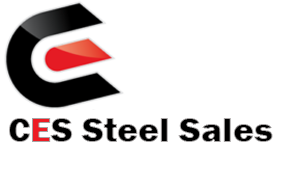Laser Cutting vs. Traditional Steel Cutting Methods: A Comparison

In the world of steel fabrication, precision and efficiency are key factors that directly impact project timelines, quality, and cost-effectiveness. When it comes to cutting steel, two primary methods have dominated the industry for decades: traditional cutting methods and the more recent innovation of laser cutting. In this blog post, we will compare laser cutting and traditional steel cutting methods, exploring their differences, advantages, and applications.
- Precision and Accuracy:
Traditional steel cutting methods, such as sawing or shearing, often involve manual processes that are susceptible to human error. In contrast, laser cutting employs advanced computer-controlled systems that offer unparalleled precision and accuracy. With a focused laser beam, intricate cuts, sharp corners, and complex patterns can be achieved with remarkable consistency, ensuring high-quality results even for intricate designs.
- Versatility and Flexibility:
Traditional steel cutting methods may be limited in their ability to handle various thicknesses and materials. Laser cutting, on the other hand, provides exceptional versatility. Whether it’s thin sheets or thick plates, stainless steel or aluminum, the laser cutting process can adapt to a wide range of materials and thicknesses with ease. This flexibility makes laser cutting an ideal choice for diverse steel cutting applications.
- Speed and Efficiency:
Laser cutting offers significant advantages in terms of speed and efficiency. Traditional methods often involve time-consuming setup, changeover, and manual labor. In contrast, laser cutting machines can rapidly process steel, resulting in faster project turnaround times. Additionally, the precision and accuracy of laser cutting minimize the need for secondary operations, reducing production time and costs.
- Material Distortion and Cleanliness:
One concern with traditional steel cutting methods is the potential for material distortion or warping due to the heat generated during the cutting process. Laser cutting minimizes this issue by utilizing a focused beam that generates minimal heat-affected zones, resulting in clean, precise cuts without significant distortion. This aspect is especially crucial for projects that require tight tolerances or demand high-quality surface finishes.
- Cost-effectiveness:
While laser cutting technology may involve higher upfront costs compared to traditional methods, its long-term cost-effectiveness should not be overlooked. Laser cutting reduces material waste through optimized nesting and maximizes efficiency, minimizing the need for manual labor and secondary operations. Additionally, the precision and accuracy of laser cutting contribute to higher quality results, reducing the likelihood of rework or scrap. Ultimately, the improved productivity and minimized material waste of laser cutting can lead to substantial cost savings over time.
Conclusion:
When it comes to steel cutting, laser cutting has revolutionized the industry by offering unparalleled precision, versatility, and efficiency. While traditional methods still have their place in certain applications, laser cutting’s superior accuracy, speed, and cost-effectiveness make it a preferred choice for many steel fabricators. Whether it’s intricate designs, tight tolerances, or diverse material requirements, laser cutting consistently delivers exceptional results. By embracing this advanced technology, businesses can elevate their steel cutting capabilities, enhance productivity, and achieve superior quality in their projects.
If you’re looking for precise, efficient, and versatile steel cutting solutions, laser cutting is undoubtedly the cutting-edge choice for your fabrication needs. Embrace the power of lasers and take your steel cutting processes to new heights of excellence.
